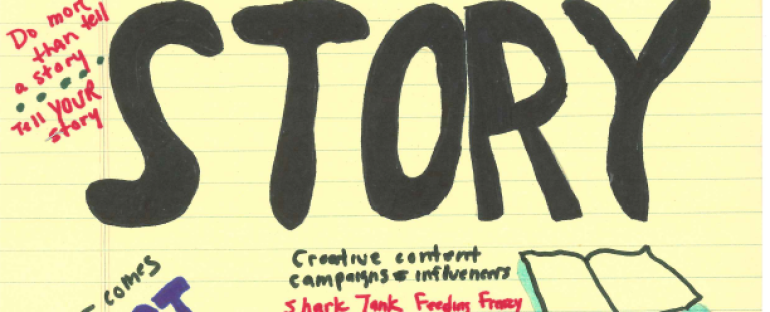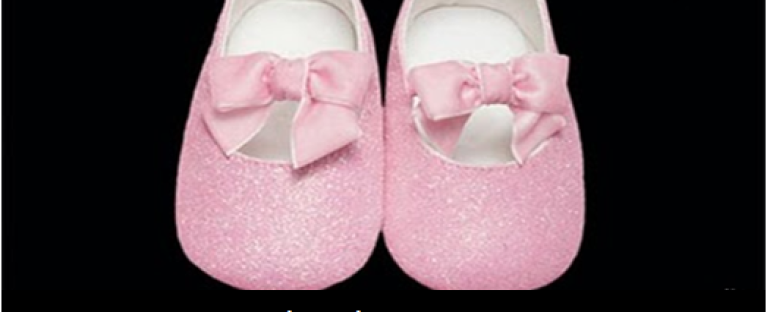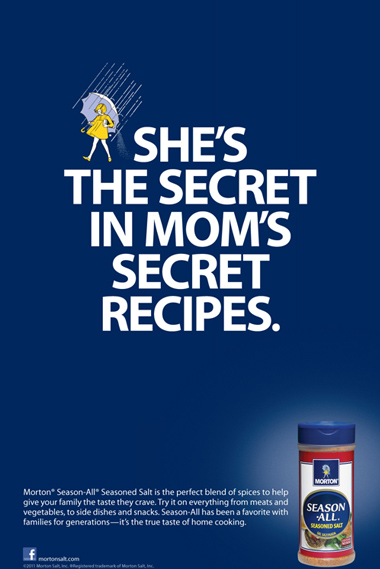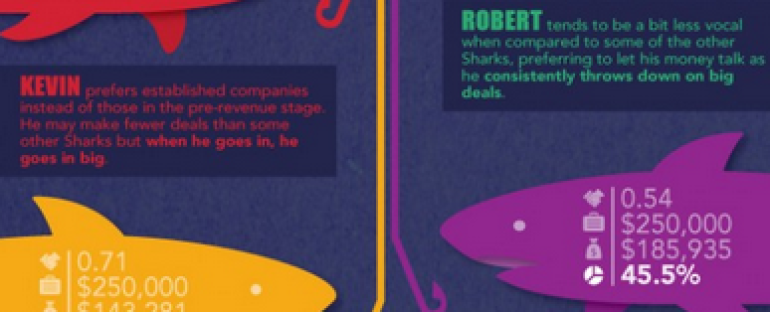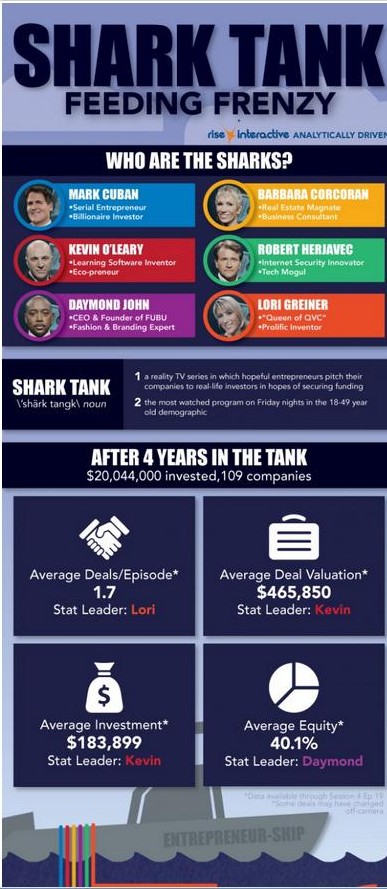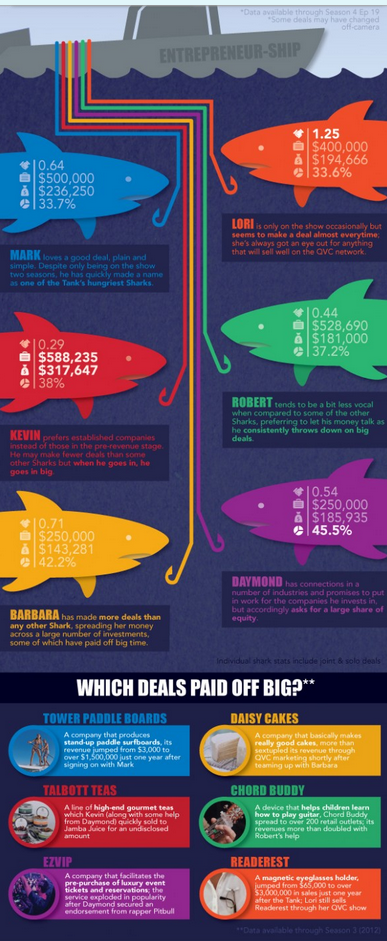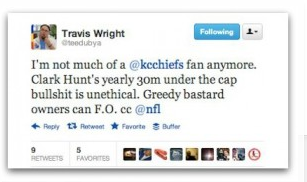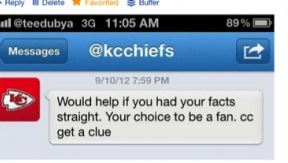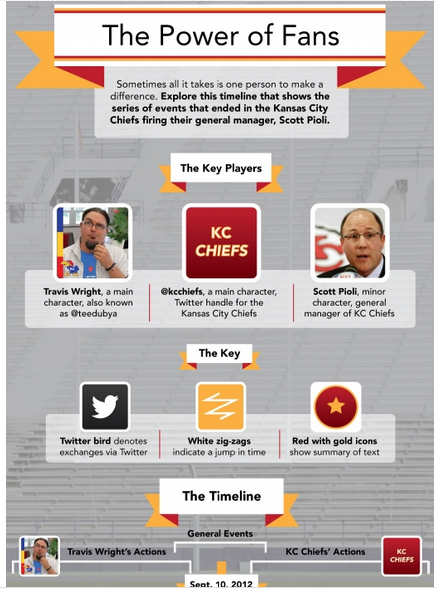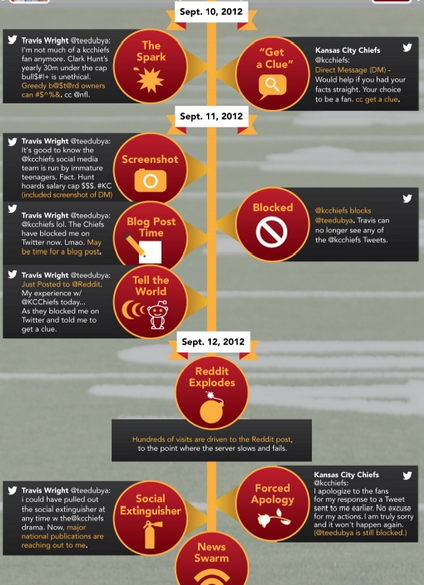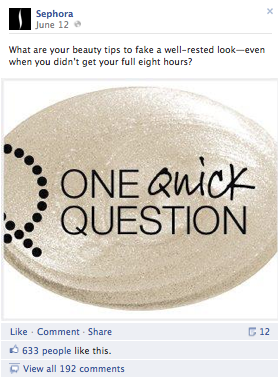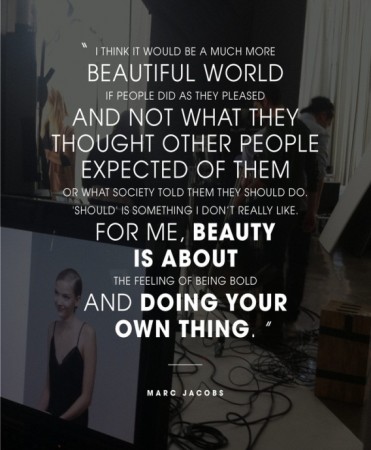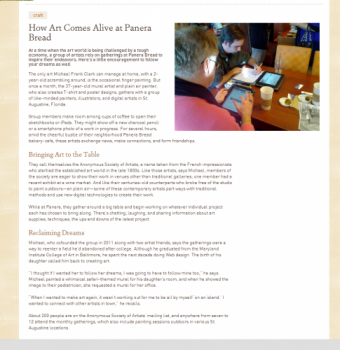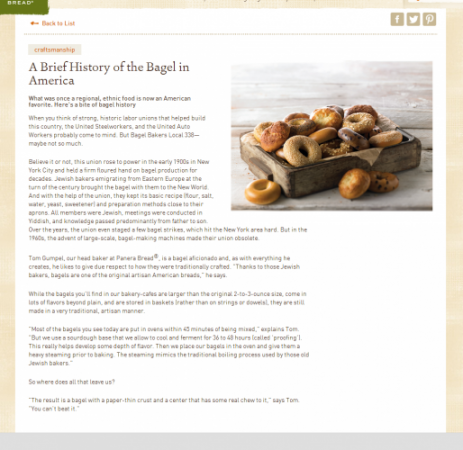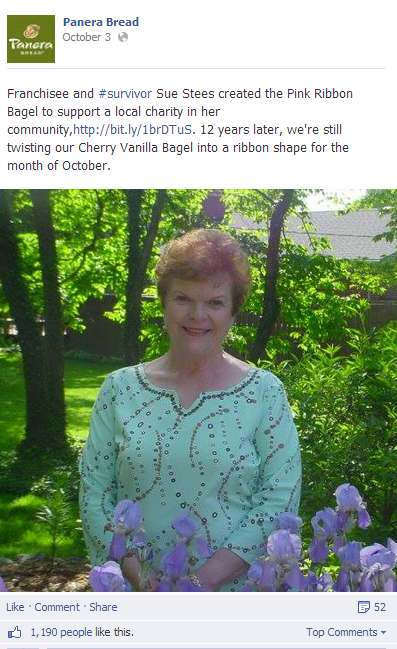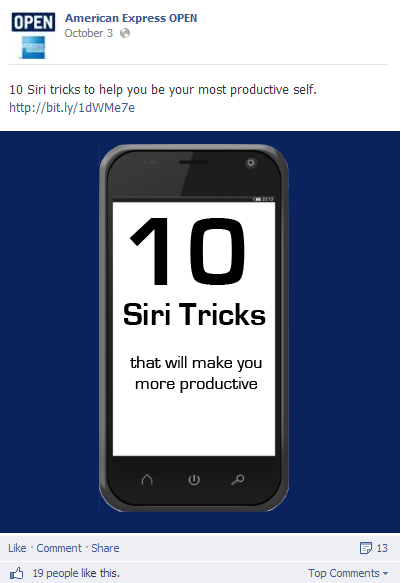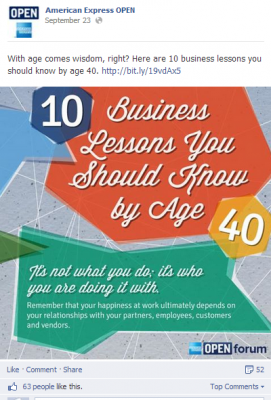This year’s sessions during Social Media Week Chicago served as an excellent reminder for content strategists and marketers alike when looking to craft compelling brand stories and content marketing. Here are a few key takeaways: 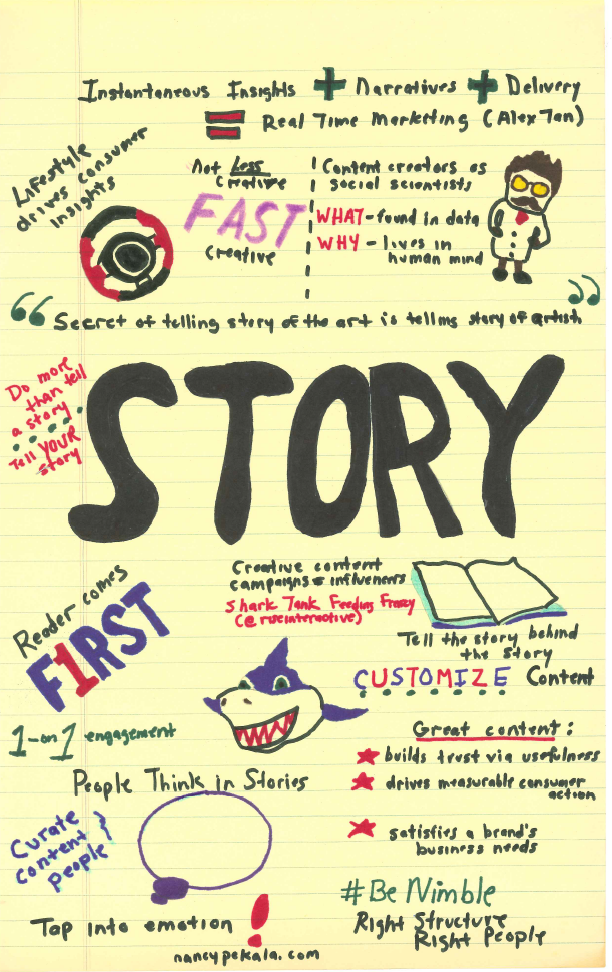
- Behave like a Social Scientist.
Human beings naturally think in terms of stories. You can understand how consumers are likely to behavior through the use of personal, emotion-filled content and conversations. WHY lives in the human mind while WHAT can be found in data. - Lifestyle trumps demographics for consumer insights.
Demographics alone won’t give you what you need to understand the motivations of consumers and customers. Instead content and marketing is more effective when it’s tied to consumers’ life stages and lifestyles. Brands like Cheerios do an excellent job of targeting multiple life stages. - The Reader comes FIRST.
When crafting content of any kind, think of the reader first, last and always. Quality counts more than quantity and any content developed should be created first for the end user, not the search engines. - Cultivate a NIMBLE organization.
To be able to effectively take advantage of real-time marketing opportunities, you must have a flexible, nimble organization. Make sure you have the right structure and the right people in place. - Focus on creating GREAT content.
To get the attention of consumers who are bombarded with marketing messages and content, make sure you are creating great content that builds trust through usefulness, drives measurable consumer action and satisfies your brand’s business needs. - Do more than tell a story; tell YOUR story.
Share insights about who you really are as a brand. Customize content and tell the story behind the story.
See Related Posts:
Modern Day Show and Tell: The Art of Storytelling with Content Curation
Can You Feel It? Why Emotion is Driving Brand Story Selling
Putting Some Teeth into your Influencer Campaigns
Connections, Conversations and Creativity Lead to Better Brand Stories
FOR SALE: Baby Shoes….Never Worn.
Just six simple words but what a story they tell. Ernest Hemingway penned this short, short story years ago on a $10 bet. But it speaks to what makes for a truly compelling story.
Ask any brand today and they’ll proudly tell you they are now actively in the business of producing content. Nearly every brand has moved content marketing to the top of their to-do list. They tweet and pin and post and blog. But are they really moving the needle in engaging their audiences through story? 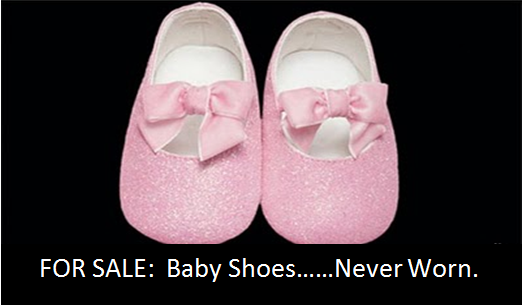
There is a huge difference between those that are merely producing content and those that are actual, bona fide storytellers.
Storytelling isn’t just about pushing out content. It’s about getting into people’s heads and hearts using the basic storytelling principles of character, conflict and resolution. As Maya Angelou once said, ““I’ve learned that people will forget what you said, will forget what you did, but people will never forget how you made them feel.”
Speaking during Social Media Week Chicago, Daryl Travis, Founder and CEO of Brandtrust and author of the new book, How Does It Make You Feel? Why Emotion Wins the Battle of Brands, stressed that today’s content creators and marketers need to think and behave more like social scientists in order to better understand the unarticulated needs for consumers. According to Brandtrust research, our non-conscious system accounts for 95% of our motivations and reveals the true mind of the consumer and uncovers emotional drivers of their behavior. The remaining 5% comprises our conscious self which reveals the voice of the customer and elicits rational answers. Storytelling allows us to tap into both.
“What drives brands is emotional, irrational and beyond our conscious awareness,” he said. “We need to understand the stories and narrative patterns of consumers’ lives and how they’re connected to brands in order to bring them to life.”
Brands are beginning to realize what every writer and journalist has always known: “Never underestimate the power of a great story.” Stories are the essence of human communication. Just ask yourself: Do you most remember bullet point factoids from a PowerPoint presentation or a story told around the office water cooler?
As author Douglas Van Praet aptly notes in Unconscious Branding: How Neuroscience Can Empower (and Inspire) Marketing, “We need to remind ourselves that we are all in the business of buying and selling good feelings. The more emotionally charged, the more likely your brand will stick out or break through the clutter, forcing people to notice your message.”
One brand that not only gets consumers’ attention but does so by focusing on feelings is Virgin Atlantic airlines. Founder Richard Branson stated: “The idea that a business is strictly a numbers affair has always struck me as preposterous. I’m convinced that it is feelings–and feelings alone–that account for the success of the Virgin brand in all its myriad forms.”
He added, “It is my conviction that what we call shareholder value is best defined by how strongly employees and customers feel about your brand. Nothing seems more obvious to me that a product or service only becomes a brand when it is imbued with profound values that can translate into fact and feeling that employees can project and customers can embrace.”
An increasing number of brands are zeroing on emotions to move the needle in the marketplace. And you don’t have to be Apple or Starbucks to make it work. Consider the case of Morton Salt. Clearly a commodity product, salt is salt with nothing differentiating it. Yet, Morton Salt enjoys a 50% market share because it sells trust to make its brand stand out. It features the familiar illustration of a little girl under her umbrella with the tag line, “When it Rains, It Pours” on its packaging, reminding customers it is the same product their mother, aunts and grandmothers used for generations.
Brands must also take into account the shape of the story they are crafting. Does the subject matter align better with an episodic or thematic approach? While episodic stories tend to be more effective at motivating an audience to take action, thematic stories earn greater emotional involvement from the audience.
Consider Microsoft’s popular ad campaign, “I’m a PC” featuring an “everyman” who identified himself as a PC user and his Mac user counterpart. Through a series of effective ads, Microsoft told a thematic story that prompted a broad consumer conversation of the merits of both products and the kinds of people who use them. The campaign proved to be a successful example of how emotional attachments can be used to develop strong brand identity and loyalty.
What’s your brand’s story? Whether it’s your personal brand or a professional one, when deciding how to tell your brand’s story consider these guidelines:
- Consider the shape of the story. Think in terms of what will be memorable so it can be passed along to someone else.
- Construct stories with emotion; think about how the story will make someone feel
- Write and create empathically. Remember there are human beings on the other side of your story.
- Don’t neglect to entertain with content.
- Turn facts into a story rather than bullet points
- Convey stories using compelling images and selective text (think of Hemingway’s short, short story)
- In social media channels, answer questions in terms of story.
Want to reel in the big fish to drive traffic and brand awareness? To get the attention of key influencers, you need to bait your hook with a combination of hard data, out-of-the-box creativity and personalized content.
Too often, brands looking to attract the attention of influencers throw a dart blindly hoping it will eventually hit a target with lots of followers or fans. With this haphazard approach, is it any wonder that brands fail to hit the bull’s eye?
Brands need to think differently today about how they can build influencer relationships. They need to roll up their sleeves and invest the time, effort and creativity it takes to reach today’s key influencers. To grab the attention of influencers who are bombarded by content every minute of every day, brands must create personalized, targeted content.
During a Social Media Week Chicago presentation, Jon Morris (@JonBMorris), Founder and CEO of Rise Interactive (@riseinteractive), a digital and analytics firm specializing in big data and analytics, advised that “Social media is all about a personalized experience. What’s your influencer’s story? Use that information to tap into emotion that will reach influencers.”
When planning influencer campaigns, brands should ask questions like:
- What are they passionate about?
- What are their hobbies?
- Who do they follow?
- Who follows them?
- What subjects do they write about or share in social media channels?
Consider the recent social media campaign Rise Interactive launched in an attempt to get one of the star sharks from the ABC hit show “Shark Tank” to bite. Using data it culled from detailed research, the agency calculated the number of average deals per episode, average deal valuation, average investment and average equity as well as a detailed profile of deals for each shark investor.
The result was the creative and detailed infographic “Shark Tank Feeding Frenzy” (see images below).
During Shark Week, the agency tweeted a customized message to each shark with a link to the infographic.
The creative campaign did its job. One of the Sharks, Barbara Corcoran, retweeted the message to her 87,541 followers and Jeffrey Hayzlett, former Kodak CEO and a key influencer himself, saw the tweet and sent a personal email to Shark Daymond John.
In another campaign aimed at driving brand awareness and website traffic, Rise Interactive jumped on an issue close to the heart of power influencer Travis Wright who has nearly 150,000 Twitter followers. Travis is passionate about the Kansas City Chiefs and set off a viral hailstorm when he posted the following tweet last September:
In response, the Kansas City Chiefs replied with the following direct message which Travis proceeded to capture via a screenshot and share with all of his followers:
Travis’ action resulted in a flurry of activity including being blocked from the Chiefs, a top post on Reddit and a variety of local and national interviews. Ultimately, the single tweet led to the dismissal of NFL General Manager Scott Pioli.
If you wanted to build a relationship with Travis, what better way than to join him in his Chiefs crusade? That’s exactly what Rise Interactive did when they launched its “The Power of Fans” campaign. In an infographic (see images below), the agency tracked the timeline of the Travis Wright vs. Kansas City Chiefs situation to demonstrate how one person can make a difference. To extend the power of the campaign, the agency also created an internal contest encouraging employees to get the word out about the campaign. Each employee was provided a unique URL so that results could be easily tracked. The winner of the contest netted 14,000 unique visitors to the site, of which 98% were new.
These two campaigns are great reminders of what it takes to capture the attention of any target audience today.
- Determine goal of influencer relationship (traffic, brand awareness, conversions).
- Use data to identify your target influencers.
- Research their data to cultivate a personal, customized story.
- Be creative when crafting personal content.
- Distribute content via appropriate and targeted channels.
- Leverage employee networks to promote content.
- Measure Results
- Build on influencer relationship with consistent communication.
To attract awesome influencers, you have to think awesome. Today’s brands need to be part data scientist, part social scientist and part artist. To win over influencers, put some teeth into those campaigns. Be creative, dig deep into the data and craft personalized stories.
There are some that would have you believe that today’s world in which everyone’s a content producer pushing out 140-character tweets, Instagram selfies and instant Vine videos is responsible for creating an industry characterized by mediocrity and lacking in imagination. But that couldn’t be further than the truth.
In fact, those of us in the content and marketing spaces are not less creative; we’re just working to be more creative at a faster pace.
“We’re in a content marketing arms race,” explained Scott Smith, VP, Content Marketing, Cramer-Kasselt, during a recent Social Media Week Chicago presentation. “It’s not about trying to reach everyone at the most efficient cost. It’s not about impressions, or page views. It’s about quality over quantity and having real conversations with individuals.”
To do that requires that brands tap into their unique culture to do more than just tell a story; they must tell their story in a way that connects with their audiences.
The whole point behind creating content, especially in social media channels, is to connect with people. Thanks to reams of data, brands can effectively talk to individuals. To do that effectively requires that brands understand the reader comes first when developing content.
Before launching any kind of content marketing program, brands need to answer some key questions:
- Who is our audience and who isn’t?
- What do we want readers to do?
- What do readers want from us? Can we provide it?
- What assets do we have—people, places, things?
- How do they talk about us when they think we’re not listening Are we listening?
- What do we have to offer that no one else does?
Armed with this critical information, brands will be better prepared to create really great content that accomplishes three basic goals:
- Builds trust with users through usefulness
- Drives measurable consumer action
- Satisfies a brand’s business needs
Too often brands get hung up on having to create really intellectual content based on research or data. That’s important content to have but it doesn’t always have to be so cerebral. Sometimes it just needs to be entertaining and memorable.
There’s really no excuse for brands not to be able to engage readers with quality content as they have so many sources of content at their disposal. Some common sources of content to consider include:
- How We Got Our Start
Share the story of your brand’s history and the milestones it hit along the way.
- Ideas that Didn’t Make the Cut
New product or service ideas that were nixed can be interesting fodder for brand stories.
- The “Why” behind Business Decisions
Consumers can gain real insights into a brand by learning about the drivers behind key business decisions.
- Key Challenges and How We Overcame Them
Honesty and authenticity are critical to creating engaging brand content. Consumers appreciate hearing about challenges facing a brand and, more importantly, how they worked to overcome them.
- Our Culture and Mission
Stories that exemplify your culture and mission can go a long way in humanizing your brand.
- New Product Uses
Think out-of-the-box and offer consumers ideas for new uses for your products. - Your Causes
Stories about the causes your brand is committed to help to define what you stand for.
- Requests for Feedback
Don’t forget to engage consumers by asking for their feedback, questions or comments about your brand. Follow up with content that responds to that feedback or provides updates.
Creating compelling, quality content is not only helps keep brand engaged with their audiences, but it’s also good news for search engines. Nick Papagiannis, VP, Search Director, Cramer-Kasselt stressed that “Content should be beneficial to your customer, reflective of the brand, and optimized for Google.”
Content that is truly search friendly is optimized for the technology environment, includes the right keywords in the right places and is adequately promoted. Links to new content via social channels is one way to effectively rank higher in the search engines while engaging your audiences.
However, even Matt Cutts, head of Google’s Webspam team, has cautioned, “Never sacrifice the quality of your copy for the sake of search engines.” The reader always comes first.
There are a number of brands today that are maximizing the benefits of a great content strategy. Sephora, for example, has been successful in creating engaging video and Tumblr content. It’s clear Sephora’s strategy is to create memorable, shareable content rather than focus on direct lead generation. The brand has a long-term perspective rather than seeking an immediate return. The strategy is working well for Sephora which boasted a 400% increase in iPad traffic to the brand’s website in 2012 and a 300% increase in shipments via mobile in 2012.
Panera Bread is another brand that generates a variety of content which focuses on creating human connections with its customers. The brand’s website includes a number of “feel good” stories about the role Panera Bread plays in local communities. The popular restaurant chain also highlights the history of its products in an engaging way.
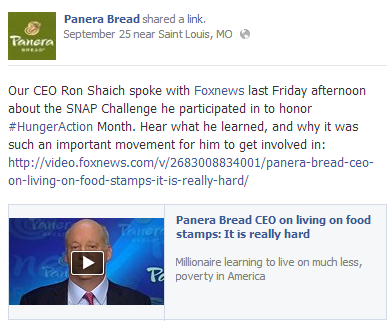
For AMEX Open, a website dedicated to small business networking, content is all about usefulness and creating one-on-one conversations with customers. Backed by 200 expert contributors, the brand’s strategy focuses on delivering content that small business professionals need, providing a forum for them to exchange advice and helping them to make smart decisions.
Are you truly focused on telling YOUR story, or just pushing out content in the hopes of garnering another like or share? Before you hit that publish button, make sure what you’re sharing is advancing your brand story in a personal way that truly connects with your audiences.
In kindergarten, I really, really loved Show and Tell. I would dig deep into my toy box, scrounging through every toy and prized possession I owned as I agonized about selecting the absolute coolest one to share with my classmates. Surrounded by my captive audience, all sitting cross legged in a circle as they intently looked up at me, I was excited to just not proudly hold up my cherished possession but to share with them the story behind it. That was, no doubt, my very first experience with curation.
In my high school and college years, I graduated to creating mixed tapes and CDs for friends and loved ones. I spent an inordinate amount of time carefully selecting each song assembling each playlist to match a theme. There was one for post-break ups, dance parties, girl anthems, new romances and favorite classics. I learned to hone my curation skills as I carefully packaged my playlists to fit specific recipients, moods and themes.
These early experiences helped prepare me for the more advanced curation skill sets I would come to depend on in my chosen career as writer, editor and content strategist.
Today, curation has become not just the latest buzzword but important business. It used to be that if you called yourself a curator, you spent your days in the musty back rooms and marble halls of museums. But today, thanks to technology, a variety of creators, content professionals and consumers are laying claim to the title.
What exactly is curation? As defined by Macmillan Dictionary, curation is “the process of analyzing and sorting content and presenting it in a meaningful and organized way around a specific theme.”
Often sold as the answer to information overload, content curation involves the human act of sifting, sorting, arranging and publishing content around a topic into a story narrative that adds value and helps the audience make sense of the big picture. A content curator, akin to the editor’s role, is to add context to the material for the intended audience. It requires a critical hand to thoughtfully sort a few pieces of content from a wide variety of options.
What content curation is NOT, however, is mere aggregation or regurgitation of content, especially that which is volume- or brand-driven. Content curation is really about storytelling through the selection of choices the curator makes.
When distilled to its simplest form, as a content curator, the content I select is that which I’ve seen, read, or heard about that is something I think my audience should also experience. As a result, the job of content curator is highly personal and individualistic. When you decide to include this content and not that, you are making decisions that best serve the story.
However, curators must walk a fine line between making decisions based on their personal choices with those of the broader audience they serve. The truly talented curators actually convince their audience that they are crafting their own choices rather than adopting someone else’s.
As the role of content curator continues to evolve, brands and professionals alike are redefining it. Red Bull now curates events with street artists. Restaurant guide Zagat curates its listings while Etsy, the ecommerce website focused on handmade or vintage items, uses “guest curators.” Actress Blake Lively recently announced she’s launching a lifestyle company that helps people “curate” their lives. In a Business Insider article, Lively explained, “”The main element of it is that it’s about storytelling and it’s about living a very one-of-a-kind, curated life, and how to achieve that.”
From playful Pinterest collages to carefully nurtured iTune playlists to Amazon’s “list” feature, just about everyone is becoming a curator. There’s even a “Curate Meme” Tumblr page which offers up a series of images with curation jokes.
12 Top Content Curation Sites
There are lots of great content curation sites from which to choose. Here are a dozen of my current favorites.
- BuzzfeedFrom “21 Types of People You See at Disneyland” to “19 Ways iOS 7 is Causing the Actual Apocalypse”, this website is a veritable creation and curation machine thanks to a team of editors and curators who constantly feed their audience with interesting factoids.
- CMO.comAlthough still a lightweight in the curation department, this site targeting Chief Marketing Officers does a good job of packaging content around specific themes.
- Fab.comA true success story, FAB is clearly a content company. After a company reset a year or so ago, it now is on track to reach $100M in revenue. With a continuous stream of colorful, engaging images, the site provides continuous content on everything from furniture, art and jewelry to pets, food and fun.
- Google NewsNot surprisingly, this curated platform features aggregated content which is automated. For pure volume alone, you can’t beat this tool from the mega search engine.
- Huffington PostThe folks over at Huffington Post do a great job of curating content using a balance of sources. They create some content, cull great links from around the Web and include some content from its readers.
- InboundIf you’re looking for great content about social media, content marketing and SEO, this should be on your list of go-to sites. A partnership between co-founders of SEOMoz and Hubspot, allows for great community-generated content. It’s also a good example of how social ranking can be effectively used to curate content.
- IntelIntel takes curation a step further with this site that encourages content sourced by its employees via Twitter. Powered by Intel’s proprietary IQ social content curation platform, the website focuses on showcasing the impact of technology on media, life and the planet. It includes three primary categories of content: feature stories created or curated by Intel IQ staff, top trending stories (complete with an IQ score) and tweets using the #IQ hashtag.
- RedditWhile hardly a newcomer, Reddit uses crowdsourcing to provide interesting, and often unheard of, stories and conversations.
- Scoop ItA new curation player on the scene, Scoop.it allows users to curate information about any topic they want, add their perspective and share with their networks.
- Social@CiscoAn early social media adopter, Cisco curates a variety of content from communities, social media channels and blogs.
- Team Titleist Powered by the Telligent platform, this site curates branded content from Titleist blogs, Twitter, Facebook and Instagram accounts. One of its unique features is that it defaults content by what is trending. It’s a one-stop shop for all Titleist content.
- The Monkey Cage
One of the more unique curation sites, The Monkey Cage curates social science research that is publicly available. Content is primarily limited to blog posts by chief blogger and political scientist John Sides but the commentary is well-written and illustrated.
For more content curation examples, download the Content Curation Look Book by Curata.
Do you have any favorite content curation examples? Share them here.
Share This
Recent Blog Posts
- International Women’s Day: Taking action to gain traction
- Be a shoulder and a hand: 10 ways to help women in the workplace show up and shine up
- Unfinished Business: Content Marketing’s Role in Cracking the Glass Ceiling
- Lessons Learned from 84 Lumber’s Super Bowl Fail
- Brands Rise Up to Stand Out in Super Bowl 2017
Categories
Blog Post Tags
My Tweets

About Me
Portfolio Categories
Follow Me
Recent Posts
-
International Women’s Day: Taking action to gain traction
The first time I noticed men and women were treated...
-
Be a shoulder and a hand: 10 ways to help women in the workplace show up and shine up
International Women’s Day is an important day of...
-
Unfinished Business: Content Marketing’s Role in Cracking the Glass Ceiling
When it comes to tackling the gender equality issue...
-
Lessons Learned from 84 Lumber’s Super Bowl Fail
84 Lumber got it wrong on Super Bowl Sunday. In fact,...








